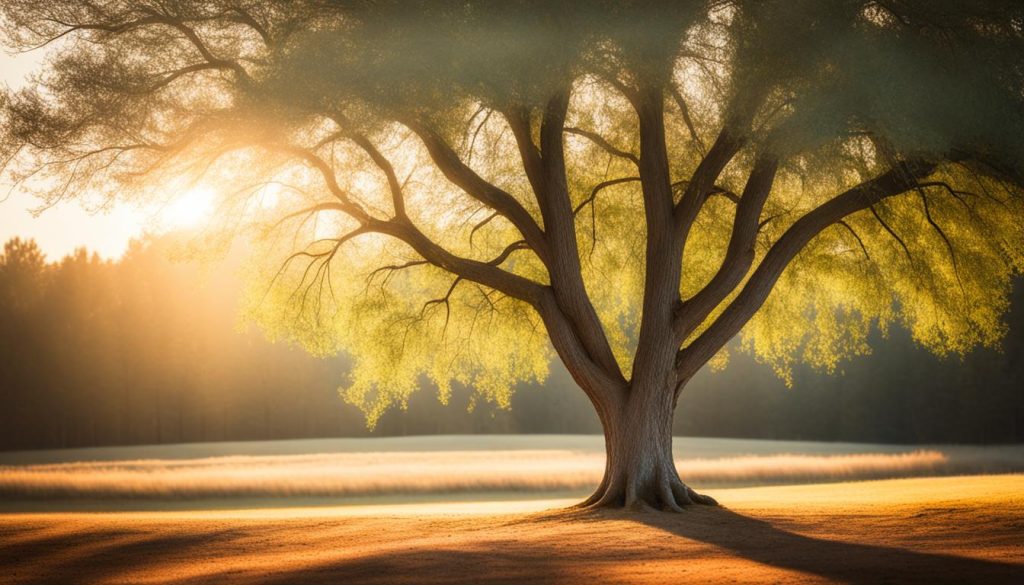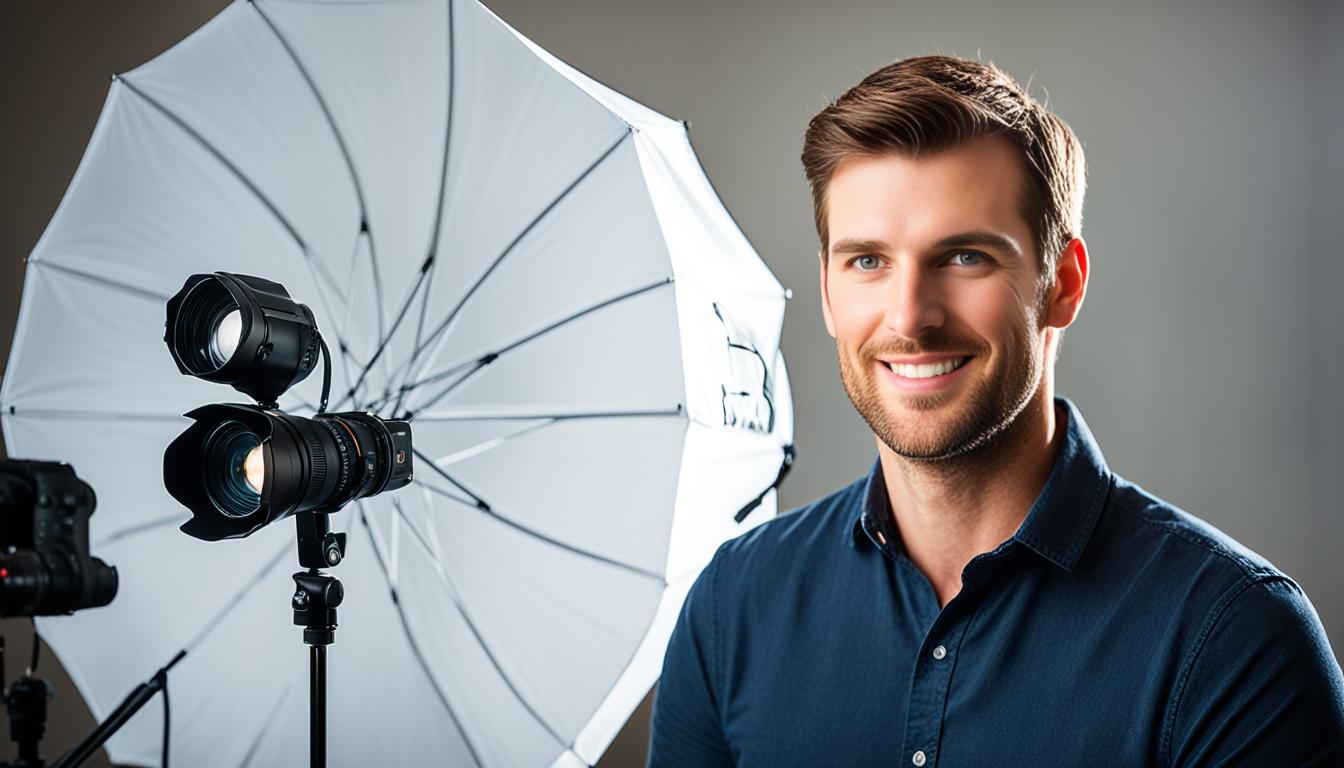Whether you’re framing a candid moment or preparing for a full-scale photoshoot, understanding and employing the best lighting techniques can transform your work from good to great. Photography is essentially painting with light, and to create that perfect picture, it’s crucial to grasp various lighting tips for photography. This article will illuminate your path, emphasizing professional lighting advice designed for both studio and natural environments. Prepare to explore a spectrum of indoor lighting tips and outdoor lighting strategies that will cast your subjects in their best light.
Our guided expedition will carry you through the riveting world of light, from the soft, ethereal glow of natural lighting tips to the precision and flexibility that come with studio lighting tips. Whether your scene unfolds under the vast sky or within the confines of four walls, these insights will empower you to craft stunning visual narratives. With a little patience and practice, these lighting tips for photography will not only brighten your shots but also add depth, emotion, and clarity to your images.
Key Takeaways
- Utilize the golden nuances of natural lighting tips to capture images with a warm, authentic feel.
- Harness studio lighting tips to craft a controlled, professional-grade photographic environment.
- Apply outdoor lighting techniques to accentuate texture and convey mood in your outdoor shots.
- Master indoor lighting tips to combat challenging low-light conditions and interior spaces.
- Seek out professional lighting advice to refine your technique and foster constant improvement.
- Adopt the best lighting techniques to elevate both the technical quality and emotional impact of your work.
Understanding the Basics of Photography Lighting
Grasping photography lighting basics is a crucial step for anyone aiming to capture stunning images. Diving into the world of lighting terms can transform the way you perceive and utilize light in your photography. Let’s embark on this journey to illuminate the core aspects of photography lighting that will lay the foundation for your imagery skills.
Essential Lighting Terms and Concepts
To manipulate light effectively, understanding the lighting terms such as ‘exposure’, ‘light temperature’, and ‘color temperature’ is key. Exposure determines how light or dark an image will appear, while light temperature refers to the warmth or coolness of a light source. Color temperature, measured in Kelvin, affects the mood and feeling of your photographs.
Types of Photography Lights
Exploring the types of lights used in photography can significantly impact the final outcome. Whether you’re working with natural sunlight or artificial light sources, knowing when and how to use these tools is essential. Commonly, photographers rely on continuous lighting for its predictability or flash for dynamic power and versatility.
The Role of Shadows and Highlights
The interplay of shadows and highlights is what gives your photographs depth and dimension. Shadows help define the form of the subject, while highlights can draw attention to specific details. Mastering the balance between these two elements is a dance that can elevate the visual storytelling of your work.
| Term | Definition | Impact on Photography |
|---|---|---|
| Exposure | Amount of light reaching the camera sensor | Dictates overall image brightness |
| Light Temperature | Color cast of light source | Influences mood and atmosphere |
| Color Temperature | Temperature of light measured in Kelvin | Alters color balance in photos |
| Continuous Lighting | Light source that remains on | Allows for real-time lighting adjustments |
| Flash | Brief burst of intense light | Freezes action and enhances subject contrast |
Mastering Natural Lighting Tips

Embracing the natural elements to illuminate your photography can yield stunning, lifelike images. Understanding when and how to use the light provided by the sun, and complementing it with tools like reflectors and diffusers, is key to mastering natural lighting. Time of day, weather patterns, and strategic positioning all play crucial roles in the quest for capturing the perfect shot with optimal natural light.
Using the Golden Hour to Your Advantage
Golden hour photography is coveted for its ability to produce soft, warm hues that flatter any subject. Occurring just after sunrise or before sunset, this time offers a diffuse and directional light that brings a quality to photos that is difficult to replicate with artificial sources. By scheduling outdoor shoots during these periods, photographers can take advantage of the golden glow that is naturally diffused across the sky.
Controlling Light with Reflectors and Diffusers
Even the most ideal natural lighting conditions may need subtle tweaks to align with a photographer’s vision. Reflectors and diffusers serve as invaluable tools in manipulating natural light. Reflectors bounce light onto the subject, filling in unwanted shadows, while diffusers soften the harsh sunlight, reducing glare and creating an even tone. Perfecting the use of these tools is a cornerstone of natural lighting tips that should not be overlooked.
Weather Considerations for Optimal Natural Light
The weather has a profound effect on the availability and quality of natural light. A clear, sunny day might seem ideal, but it can often cast harsh shadows and produce an overabundance of light. Overcast conditions, on the other hand, provide a natural diffuser, creating even and soft light across the entire scene, which can enhance the pursuit of optimal natural light in your photography.
| Condition | Golden Hour | Overcast | Sunny |
|---|---|---|---|
| Light Quality | Warm and soft | Soft and even | Harsh and direct |
| Tools to Use | None needed | Reflector for added brightness | Diffuser to soften shadows |
| Subject Shadow | Soft with long edges | Faint or minimal | Sharp and defined |
Leveraging Studio Lighting Tips for Pro-Level Results
When it comes to studio photography lighting, utilizing a mix of studio lighting tips and professional lighting techniques is key to producing visually stunning images. Here we explore practical steps for setting up and manipulating light sources to control the outcome of your studio images meticulously.
-
To start, assess the size and shape of your studio space to determine the number and types of lights you’ll need. Professional studio lighting setups often involve a combination of main, fill, and accent lights to create depth and dimension.
-
Next, be meticulous with the placement of your lights. The key light should cast the main illumination on your subject, while fill lights can soften shadows, and background lights will separate the subject from the backdrop.
-
Don’t forget the importance of modifiers such as softboxes, umbrellas, or grids that shape and diffuse light to create the desired mood and texture in your photographs. Experimentation is encouraged to find the sweet spot for each setup.
-
Keep an eye on the color temperature of your lights. This knowledge allows you to control whether the image feels warm or cool, impacting the overall atmosphere of your studio shots.
Let’s break down some professional lighting techniques with a simple-to-follow setup to enhance your studio lighting tips:
| Lighting Component | Function | Pro Tips |
|---|---|---|
| Key Light | Provides primary illumination | Position at a 45-degree angle for a classic look |
| Fill Light | Reduces shadows cast by key light | Use a reflector for a subtle fill or a secondary light for more control |
| Back Light | Separates the subject from the background | Position it opposite the key light to create a rim lighting effect |
| Accent Lights | Adds depth and dimension | Spotlights or strip lights can highlight specific features |
As you refine your studio lighting techniques, remember that mastery comes with practice and patience. Your goal should be to create a controlled lighting environment that caters to the visual story you’re aiming to tell. With this tailored approach to studio photography lighting, you’re well on your way to capturing professional-grade images every time.
Photography Lighting Tips for Beginners
Diving into the world of photography can be thrilling, but understanding lighting is essential from the get-go. For novices, it’s beneficial to begin with a clear guiding principle: Light shapes photographs. Grasping this can elevate your images from simple snapshots to artistic compositions. Below, we have outlined some elemental beginner photography lighting tips that will set the stage for your success.
Starting with a Basic Light Setup
The cornerstone of any great photo is a basic light setup. Familiarize yourself with the trio of key light, fill light, and backlight. Your key light should be your primary light source, bright and directing the viewer’s attention. The fill light counters harsh shadows caused by the key light, and the backlight separates the subject from the background, adding depth to the scene. Mastering this basic light setup is a fundamental skill in beginner photography lighting tips, forming the foundation for more complex lighting scenarios.
Understanding Light Modifiers
Light modifiers are the tools that sculpt and refine the light in your images. Items like umbrellas and softboxes diffuse light, creating a softer, more flattering illumination on your subject. Grids can focus light into tighter beams for dramatic effects. By understanding how to use these light modifiers, you can dramatically improve the quality of your indoor and outdoor shoots. Remember, the purpose of these devices is to control and manipulate light to suit the vision you have for your photograph.
Common Lighting Mistakes to Avoid
Everyone makes mistakes, but in photography, some missteps can be avoided with a bit of know-how. Overlooking the white balance setting can result in colors that look unnatural. Neglecting to consider the direction of light may flatten your imagery. Additionally, avoid using too much or too little light, as it can lead to loss of detail in the highlights and shadows. Steering clear of these common lighting mistakes ensures your pathway to capturing stunning photographs is a lot smoother.






